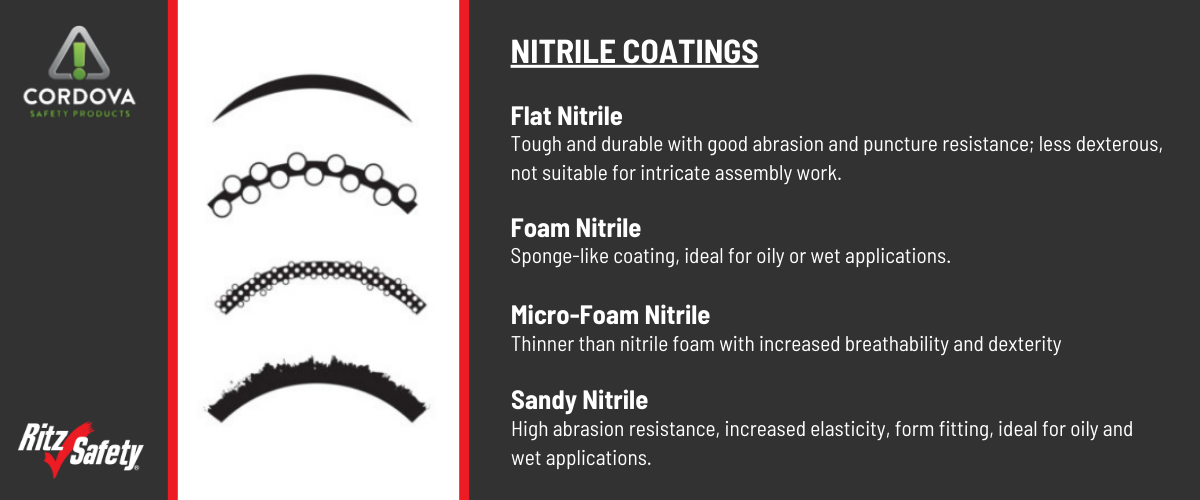By: Cordova Safety (used with permission)
With the number of of different nitrile glove coatings available, how do you know which is right for you? Flat, Sandy, Foam? Why must it be complicated? It doesn't have to be, so let's make it easy for you.
First, let's talk about nitrile, in general.
Nitrile is an oil-resistant, synthetic rubber that provides resistance against abrasions, snags, and punctures. Nitrile gloves are available as disposable gloves, supported and unsupported gloves, and machine knit gloves. For this blog, we’ll focus on machine knit, nitrile-coated gloves.
Machine Knit Nitrile Gloves
Machine knit gloves provide seamless, flexible, form-fitting comfort that allows for excellent dexterity and decreases hand fatigue. The type of machine-knit glove, beyond the glove coating, depends on the application – for example, whether cut resistance is a factor or chemical protection is needed. According to the Occupational Safety & Health Administration (OSHA), “It is essential that employees use gloves specifically designed for the hazards and tasks found in their workplace because gloves designed for one function may not protect against a different function even though they may appear to be an appropriate protective device.”
You can read more about OSHA's guidelines and recommendations for PPE here.
Nitrile Glove Coating Chart
If, after examining the workplace and determining that a nitrile-coated machine knit glove is needed, we’ve provided some help in selecting the coating. The nitrile glove coating chart below provides a guide for selecting the right nitrile coating for the application, whether it's flat nitrile, foam nitrile, micro-foam nitrile, or sandy nitrile.

Types of Nitrile Glove Coatings
FLAT NITRILE – Flat nitrile glove coatings are tough and durable with good abrasion and puncture resistance; however they are not recommended for intricate assembly work as they are less dexterous than other nitrile coatings. Applications include: Food Packaging, Warehousing, Construction, Furniture Manufacturing, Electronics, Petrochemical.
FOAM NITRILE – Foam nitrile is a sponge-like coating that disperses oils, making it ideal for oily or wet applications. Applications include: Material Handling, Wiring, Durable Goods Assembly, Machining Operations.
MICRO-FOAM NITRILE – This is a thinner version of foam nitrile to allow for increased breathability and dexterity to minimize hand fatigue. Applications include: Electronics Manufacturing, Maintenance, Automotive Assembly, Packaging.
SANDY NITRILE – Sandy nitrile is fairly rough to the touch, making it highly abrasion-resistant. It has increased elasticity and is ideal for oily and wet applications in a high-abrasion environment. Applications include: Machining Operations, Construction, Plumbing, Masonry.
Shop all Cordova Work Gloves:

If you are still unsure about which nitrile-coated machine-knit glove to choose for your application, contact us today - WeCare@RitzSafety.com
